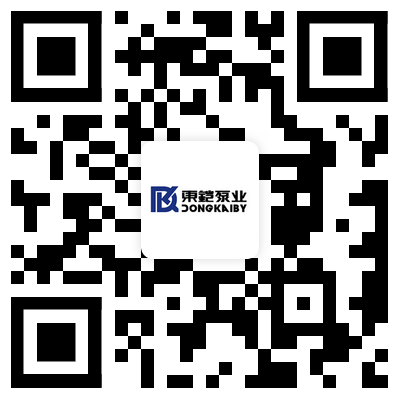- English
- Español
- Português
- русский
- Français
- 日本語
- Deutsch
- tiếng Việt
- Italiano
- Nederlands
- ภาษาไทย
- Polski
- 한국어
- Svenska
- magyar
- Malay
- বাংলা ভাষার
- Dansk
- Suomi
- हिन्दी
- Pilipino
- Türkçe
- Gaeilge
- العربية
- Indonesia
- Norsk
- تمل
- český
- ελληνικά
- український
- Javanese
- فارسی
- தமிழ்
- తెలుగు
- नेपाली
- Burmese
- български
- ລາວ
- Latine
- Қазақша
- Euskal
- Azərbaycan
- Slovenský jazyk
- Македонски
- Lietuvos
- Eesti Keel
- Română
- Slovenski
- मराठी
- Srpski језик
Metering pump accessories and knowledge of pipeline accessories
2022-07-29
a complete metering pump head include?
A complete liquid end includes the following components: pump head, diaphragm, valve, back plate and mounting bolts.
the main purpose of the foot valve ?
foot valve itself has a certain weight to keep the suction line straight and make the suction line perpendicular to the chemical tank. In addition, it is also a check valve to maintain the positive flow of chemical liquid. The foot valve also helps to improve the repeatability and proper suction of the pump. There is a filter in the bottom valve to prevent solid particles from being sucked into the suction line, and the suction of small solid particles may cause the diaphragm of the metering pump to be damaged. The foot valve also includes a connector for connecting the suction tube. The foot valve should be installed vertically and keep the foot valve a certain distance from the bottom of the storage tank. It is very necessary to select the bottom valve of most metering pumps that work by self- priming .
What is the main purpose of the injection valve?
injection valve is used for the connection of the drain line and the injection point. Injection valves cannot be used as isolation devices or as protection against siphoning. In less demanding applications, the injection valve can generate a back pressure of 0.5 bar .
What is the main purpose of flushing equipment?
Flushing equipment is used to clean metering pump heads and drain lines. It is mainly used when the metered chemicals are easy to solidify or the metering pump needs to be idle frequently.
What is a float switch and what is its main function?
The float switch is a very critical device for controlling the liquid level of the medicine storage tank. When the liquid level drops , the float sinks, and the contact in the switch is closed. This contact can be used to control the metering pump, such as stopping metering pump 1 and starting metering pump 2, or it can also be used to turn on the alarm/indicator to indicate the storage tank null. Through the reverse action of the float, the float switch can be applied to the collection tank, indicating that the collection tank is full and stopping the metering pump.
What is the difference between a single stage float switch and a two stage float switch
When the switch is activated, the single-stage float switch directly stops the metering pump. For a two-stage float switch, activation of the first stage can be used as an alarm to indicate a low level in the tank . When the stage switch is activated, the metering pump stops.
What is a multi-function valve?
Multifunctional valves are very versatile products that generate constant back pressure to ensure repeatable metering accuracy. An anti-siphon valve is integrated into the device, which prevents chemicals from being sucked into the vacuum line, preventing the Venturi effect or negative delivery head in the waterway. The pressure relief valve function is integrated into the device, which can protect the metering pump, pipeline and other system equipment and prevent overpressure when the system pipeline is blocked. The multi-function valve is also integrated with the function of the suction valve , which can release the pressure of the discharge line and help the metering pump to guide the liquid. The multi-function valve allows safe return of the drained liquid to the tank .
What is the main function of the traffic monitor?
Flow monitoring utilizes proximity switches that activate on each flow pulse action. The metering pump compares the discharge stroke with the number of pulses the flow monitors. If the pump cannot detect the corresponding pulse signal for 8 consecutive strokes or the set number of strokes , the metering pump stops and a fault indication is issued. In the case of empty, blocked or leaking suction line, blocked discharge line, broken diaphragm, etc., the flow monitor can send an alarm signal by not detecting the pulse signal. The proportional flow monitor detects if the metered flow decreases by 20% or falls below the set value.
What are the main uses of fault alarm relays and stepper relays?
The alarm relay contacts open (NC) or close (NO) when the metering pump fails. When the metering pump fails, the synchronization relay is closed. Usually, the synchronization relay is connected to the auxiliary metering pump to generate the same frequency as the main metering pump.
What is the main purpose of a pulse damper?
Properly sized pulsation dampers can reduce pulsation by 90% or more, resulting in near-laminar flow. The pulsation damper reduces the acceleration of the metered medium and reduces head losses.
What is the difference between the function of a snubber and a pulse damper?
The snubber can reduce the pulsation of the pipeline, at the same time reduce the acceleration of the medium and reduce the head loss. There is no separation of liquid and gas inside the buffer. The buffer cavity will eventually fill with liquid and will need to be drained.
What is a diaphragm rupture monitor and how does it work?
drive end and the pump head , and a conduit connects the leakage discharge hole to a small cylindrical barrel. If the diaphragm is ruptured, the liquid is discharged into the small cylinder through the leakage discharge hole. There is a float switch in the small cylinder, as long as there is 10ml of liquid in the cylinder, the float switch can be activated. The switch contacts can be set to normally open or normally closed.


